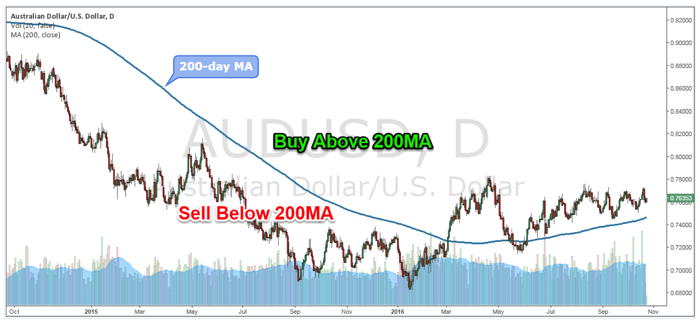-
MetaTrader 4 Brokers
The top MT4 brokers in AU
-
MetaTrader 5 Brokers
The best MT5 brokers in AU
-
TradingView Brokers
The best TradingView brokers
-
cTrader Brokers
The top cTrader brokers in AU
-
Forex Trading Apps
Trade on the go from your phone
-
Copytrading Brokers
Copy professional traders
-
All Trading Platforms
Find a platform that works for you
In this article we are going to learn all about directional bias: What it means, why it’s important, and how to develop it consciously and successfully.
What is Directional Bias?
Directional bias is a trader’s belief that the market will move in a certain direction as a result of specific events – it can be established in a number of different ways.
Establishing a directional bias is often a matter of analysing charts for support and resistance levels and price action. It’s also important to understand market inertia: The market will continue to move in one direction until something causes a break and reverses the tide.
Directional bias plays a huge role in the trend vs counter-trend strategy. Ultimately directional bias will help you choose the direction of the trend and whether you’re going to go long and buy, or go short and sell.
Once you have established a directional bias, psychologically speaking, you will have more confidence executing your trading strategy because you already know what you are looking for.
Having a directional bias means that you are no longer a reactionary trader, but can plan your trades in advance and are less emotionally attached to the markets.
Developing a Directional Bias
Strategically speaking a high probability setup is one that has been thoroughly prepared in advance and the process of developing a bias is part of that preparation. Establishing a directional bias is a two part process:
- Forecasting where the price is more likely to go up or down
- Trigger conditions or the trading rules that confirm your market bias
It’s not enough to establish a directional bias, you will also need to have trading rules to confirm your bias otherwise you may end up being more wrong than right.
Trading is much more about the way we think than it is about entry technique or a trading plan. We think, we analyse and we arrive at a conclusion – which leads to our directional bias. After we arrive at that directional bias, we try to execute our judgement to make a profit.
Directional Bias through Price Action
One way to establish a directional bias is through studying price action. If prices are moving higher (higher highs and lows) traders should form a directional bias to buy. If prices are moving lower (lower highs and lows), traders should form a directional bias to only sell.
With price action, you will also need trigger conditions to confirm your bias – you can either use your own strategy or you can use a Forex Momentum Strategy.

Figure 1: USD/JPY Daily Chart
Directional Bias through Moving Averages
Directional bias can also be established through the use of technical indicators such as moving averages. In technical analysis, the 200-day Moving Average is considered to be one of the most powerful moving averages.
If the price is trading above the 200-day moving average, traders should form a directional bias to buy and if the price is trading below the 200-day moving average, traders should form a directional bias to sell.

Figure 2: AUD/USD Daily Chart
Conclusion
The process of developing a directional bias needs to be kept as simple as possible or it can lead to analysis paralysis and indecisive trading. A simple directional bias can also act as an additional filter to your existing trading strategy.
It’s important to remember that as the market can often move with no clear direction, you have to to be disciplined enough to not act at all when a clear directional bias can’t be formed.
Stay updated
This form has double opt in enabled. You will need to confirm your email address before being added to the list.
































